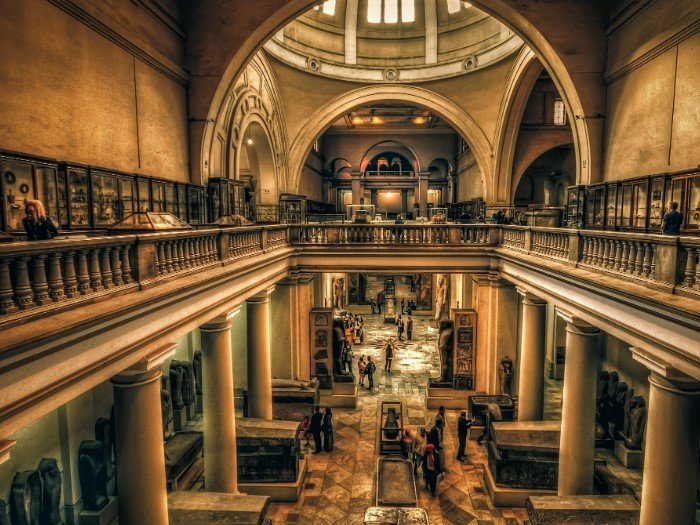Egypt celebrated the grand opening of its massive new Grand Egyptian Museum on November 1, 2025, drawing presidents, kings, and prime ministers from over 80 countries to honor ancient treasures near the Giza Pyramids. This billion-dollar project, delayed for years by political unrest and global challenges, now showcases over 50,000 artifacts, including the full Tutankhamun tomb collection for the first time.
Historic Launch Amid Global Spotlight
The event marked a major milestone for Egypt after more than two decades of planning and construction. President Abdel Fattah el-Sisi led the ceremony, joined by leaders like Jordan’s King Abdullah II and other heads of state, turning the opening into a display of international unity and cultural pride.
Crowds gathered under the pyramids’ shadow as fireworks lit the sky. The museum, spanning about 500,000 square meters, rivals the size of Vatican City and aims to boost tourism. Experts predict it will attract five million visitors each year, helping Egypt’s economy recover from recent setbacks.

This opening comes at a time when global interest in ancient history surges, with recent discoveries like a hidden chamber in the Great Pyramid adding fresh excitement. The museum’s debut aligns with growing calls for cultural preservation worldwide.
Stunning Artifacts on Display
At the heart of the museum stands the complete Tutankhamun collection, with over 5,000 items from the boy king’s tomb reunited after a century. Visitors can now see the famous golden mask, chariots, and jeweled sandals all in one place.
Other highlights include statues from the Old Kingdom and relics from the Roman era. Two halls dedicate space to Tutankhamun alone, offering a deep dive into pharaonic life.
The museum uses modern tech like interactive displays and climate-controlled rooms to protect these treasures. This setup ensures artifacts stay safe while letting people experience Egypt’s past up close.
Here are some key artifacts drawing crowds:
- Golden mask of Tutankhamun, a symbol of ancient wealth.
- Khufu solar boat, an ancient vessel for the afterlife.
- Statues of pharaohs Ramses II and Akhenaten, showing royal power.
World Leaders and Diplomatic Ties
Leaders from Europe, Africa, Asia, and the Middle East attended, highlighting the museum’s role in global diplomacy. Their presence sparked talks on cultural exchanges and economic partnerships.
For instance, discussions focused on how the museum could strengthen ties between Egypt and countries like France and the UK, home to many Egyptian artifacts abroad. This gathering echoed similar events, such as the 2024 Paris Olympics opening, where culture met politics.
Egypt used the event to showcase its stability and invite investment. Attendees praised the project as a bridge between past and present, fostering goodwill amid regional tensions.
Cultural Impact and Calls for Returns
The museum underscores Egypt’s push to reclaim its heritage from colonial-era losses. Experts like archaeologist Zahi Hawass argue it’s time for items like the Rosetta Stone and Nefertiti’s bust to come home.
This opening renews debates on artifact repatriation, similar to Greece’s efforts for the Parthenon marbles. Supporters say returning these pieces would complete the museum’s story and honor Egypt’s legacy.
Public sentiment on social media shows strong backing, with posts celebrating the event as a win for cultural justice. The museum plans exhibits on repatriation to educate visitors.
| Artifact | Current Location | Why Egypt Wants It Back |
|---|---|---|
| Rosetta Stone | British Museum, London | Key to decoding hieroglyphs, taken in 1801 |
| Nefertiti Bust | Neues Museum, Berlin | Iconic queen’s portrait, removed in 1912 |
| Dendera Zodiac | Louvre, Paris | Ancient astronomical ceiling, exported in 1822 |
Boost to Tourism and Economy
Egypt expects the museum to transform its tourism sector, which already brings in billions yearly. With easy access near the pyramids, it could double visits to Giza.
Local businesses, from hotels to guides, prepare for the influx. The site includes shops, restaurants, and a conference center, making it a full destination.
Compared to 2024 figures, where the Louvre drew 8.7 million visitors, this new spot starts strong with projections matching top global museums. Recent events like the COP27 climate summit in Egypt show how such projects tie into broader growth.
Looking Ahead to Full Access
The museum opened fully to the public on November 4, 2025, coinciding with the anniversary of Tutankhamun’s tomb discovery. Tickets sell fast, with online bookings advised for smooth entry.
Future plans include special exhibits and virtual tours, expanding reach worldwide. This ensures the museum stays relevant in a digital age.
As Egypt builds on this success, it sets an example for other nations preserving history. The opening not only celebrates the past but also points to a brighter future for cultural tourism.
What do you think about the museum’s impact on global heritage? Share your thoughts in the comments and pass this article to friends interested in history.
